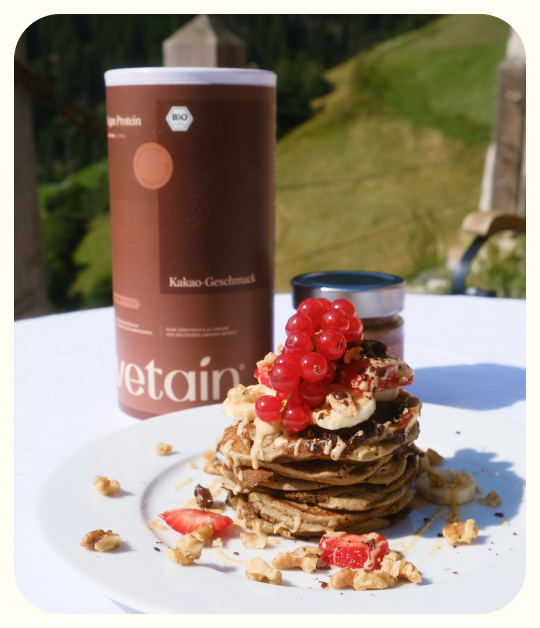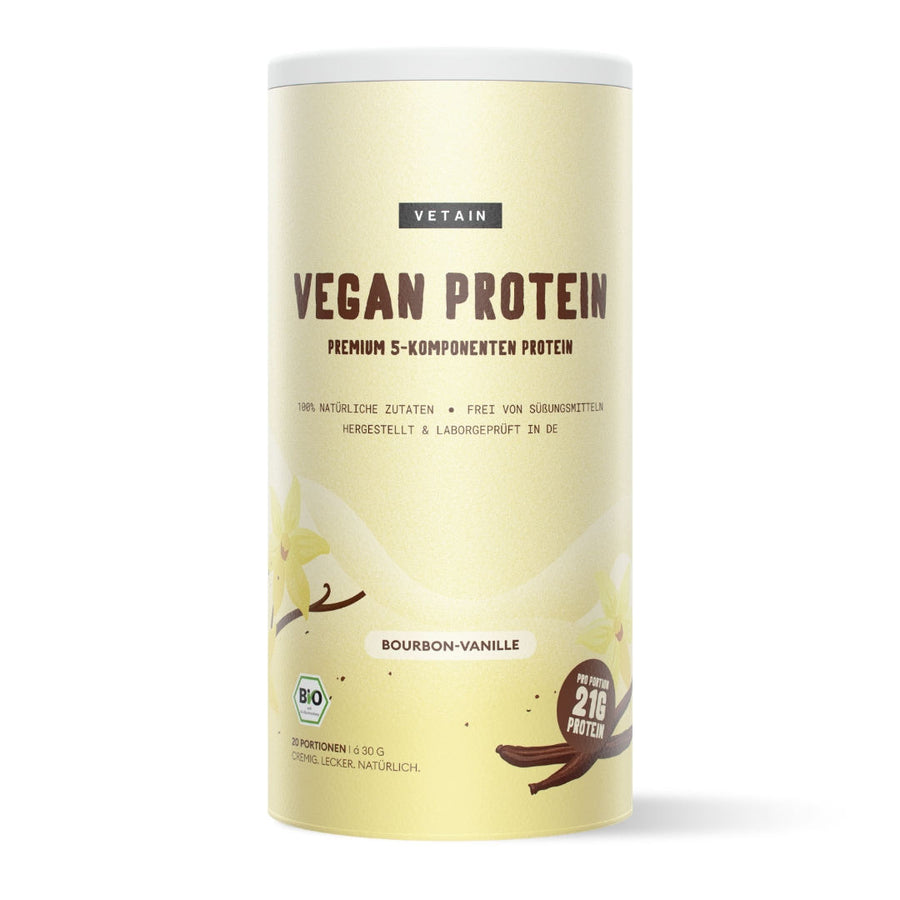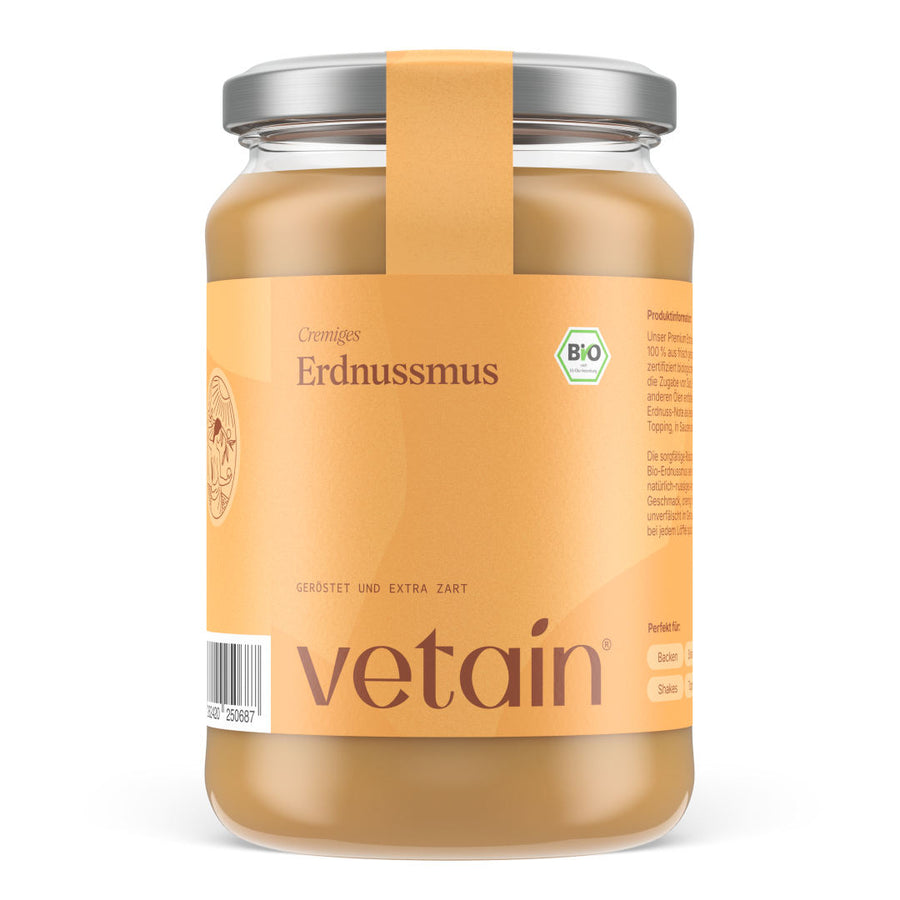What used to be thrown away as a waste product is now bought by athletes for a lot of money. And I’m sure you’ve heard of it too! We’re talking about whey protein.
What almost sounds like a brand is actually just a specific type of protein. But what exactly is whey protein? Is whey protein really useful and what are the possible downsides? Let’s find out together in the next few minutes!
Your knowledge to go: What is whey protein?
Whey protein (German: Molkenprotein) is obtained as a by-product of cheese production and then processed into protein powder.
There are different types of whey protein powder – the best known are whey concentrate and isolate.
Advantages include the high biological value of whey protein, the complete amino acid profile, and more.
Disadvantages: Not everyone tolerates whey or is a fan of it. As an alternative, there are other animal-based and plant-based proteins.
Whey protein – explained
So, what is whey protein? Whey protein (in German much less cool: Molkenprotein) is one of the main forms of protein found in milk. The other major group is casein. So whey protein is naturally present in cow’s milk and dairy products.
And what is whey protein powder? Easy! Whey protein is also sold as protein powder and is one of the best-known protein powders! But not everyone is thrilled: there are more and more critical voices and many athletes are looking for alternatives. We’ll get into that later so you can form your own opinion!
Where does whey protein powder come from?
Time for a surprise: what sounds fancy used to be a waste product. Whey is obtained from a by-product of cheese production: the whey liquid. Whey is a watery liquid that forms when milk curdles – when the future cheese separates from the liquid. It consists mainly of milk sugar (lactose), but also contains whey protein and fats.
Not too long ago, whey was considered useless and was either thrown away or fed to animals.
Then came technology and gyms into our lives, and everything changed. Okay, maybe not that dramatic.
But the food industry saw potential in this liquid and the proteins it contains, and started using them. With today’s technology, whey protein can be easily extracted and ends up in your shake as protein powder.
Once you know what whey protein really is and how it’s made, you definitely see the product (and its often high price) differently, right?
What does whey protein do?
Now we know what whey protein is. But what does protein powder actually do? And what exactly is whey protein good for? Basically, adequate protein intake is important because it contributes to the growth and maintenance of muscle mass. However, it can often be difficult to get enough protein in everyday life. That’s why athletes often turn to protein powder for extra support.
Let’s set the question “What is whey protein?” aside for a moment. Other protein-rich products like peanut butter or plant-based protein bars can also help you meet your protein needs. So whey isn’t absolutely necessary!
%-product_content-%
Different types of whey
Isolate, concentrate – what?! There are different types of whey, mainly distinguished by their composition and protein content.
Which type is best cannot be answered in general terms. Depending on your goals, preferences, and no-gos, one type may be better suited for you. Or maybe you’ll find whey simply doesn’t fit your lifestyle. More on that later!
For now, let’s take a closer look:
Whey protein concentrate
What is whey protein concentrate? Whey concentrate contains about 70–80% protein, so it has a relatively high protein content. In addition to protein, it also contains some carbohydrates such as lactose and some fat. Concentrate is relatively easy to produce, which makes it cheaper than the next two forms.
Advantage: lower price
Disadvantage: still contains lactose, not suitable for lactose-intolerant people
Whey protein isolate
The terms ion-exchange or microfiltration already show that production here is much more complex. But it’s worth it: protein content is 85–95%, much higher than concentrate. That’s because filtration removes substances such as lactose. What’s left is mostly protein.
That’s why isolate is often used in higher-priced protein powders. It’s especially popular among people with lactose intolerance because it contains almost no lactose.
Advantage: almost lactose-free, very high protein content
Disadvantage: can taste bitter
Whey protein hydrolysate
Hydrolysate has a protein content of about 80–90%, similar to isolate. The practical thing here: the proteins are already broken down into peptides and amino acids – the small building blocks of protein. In comparison, most other proteins must first be digested before the body can use them.
Advantage: high protein content, already broken down
Disadvantage: very expensive, often bitter taste
There’s also fermented whey protein – but that’s less relevant here.
Quality & effectiveness
What makes whey protein so special?
Whey protein has a very high biological value, which indicates how efficiently the body can use the protein to build its own protein.
Whey has a good amino acid profile and contains all essential amino acids (EAAs): isoleucine, leucine, lysine, methionine, phenylalanine, threonine, tryptophan, valine, and (for infants) histidine.
Whey (especially hydrolysate) contains proteins in smaller fragments thanks to processing. That’s music to athletes’ ears!
And of course, the protein content of all whey types is very high, making it a solid protein source in a high-protein diet.
Advantages of whey
Whey has numerous benefits that make it one of the most popular protein powders:
high protein content with relatively low fat and carbs
complete amino acid profile
high biological value
already broken down into smaller building blocks
depending on type: lactose-free
Disadvantages of whey
Of course, whey also has some downsides to consider:
For lactose-intolerant people and those who don’t tolerate milk, whey is only conditionally suitable.
Depending on processing, many products taste bitter.
To mask bitterness, many products contain sweeteners, which some prefer to avoid.
Whey is not suitable for vegans, since it comes from milk.
Independent tests have shown that quality varies greatly between brands.
Whey protein powders often contain many additives and fillers.
Sensitive individuals may experience side effects such as stomach pain.
Alternatives
More and more people are looking for alternatives to whey – for various reasons: intolerance, switching to vegan products, or just personal preference.
Animal-based proteins:
Casein
Egg protein
Plant-based proteins:
Soy protein
Rice protein
Pea protein
Hemp protein
Flax protein
Plant-based multi-component proteins are especially popular. Why? They complement incomplete amino acid profiles of single plant proteins, creating a complete amino acid profile. Plus, you can benefit from the advantages of different protein types.
%-split_content-%
Don’t forget: “Real” protein-rich foods. It doesn’t always have to be powder. Foods like legumes, meat, and fish are also high in protein. Always aim for a balanced diet!
What’s the best type of protein?
All proteins mentioned here have pros and cons. Which one is best depends on your diet, taste, and needs. Try out different ones to see what suits you best.
Conclusion: What is whey protein?
For some, the best protein; for others, a red flag. Opinions on whey vary widely – and that’s okay. There are so many protein sources that everyone can find the right one. What matters most is being informed and knowing what whey protein is. After this article, you certainly do – and you’re already ahead of many gym buddies who can only shrug at the question “What is whey protein?”.
Literature & sources
Newar, V. (2022). A Review on Whey Protein: Benefits, Myths and Facts. International Journal of Innovative Science and Research Technology, 7(10).
Saba Zafar (2024). Nutritional and Functional Importance of Whey Protein in Human Health and Food Applications. Applied Agriculture Sciences, 2(1).
Shankar, J. R. & Bansal, G. K. (2013). A Study on Health Benefits of Whey Proteins. International Journal of Advanced Biotechnology and Research, 4(1).
Verbraucherzentrale (2025). Whey-Protein: Das sollten Sie über Molkenprotein wissen. https://www.verbraucherzentrale.de
/wissen/lebensmittel/
nahrungsergaenzungsmittel/wheyprotein
-das-sollten-sie-ueber-
molkenprotein-wissen-80650
Any questions? Feel free to send me an email – I look forward to hearing from you! :)
The information shared in this article does not replace individual medical or nutritional advice.















 7 Min
7 Min
 Zuletzt aktualisiert am 30.10.2025
Zuletzt aktualisiert am 30.10.2025





